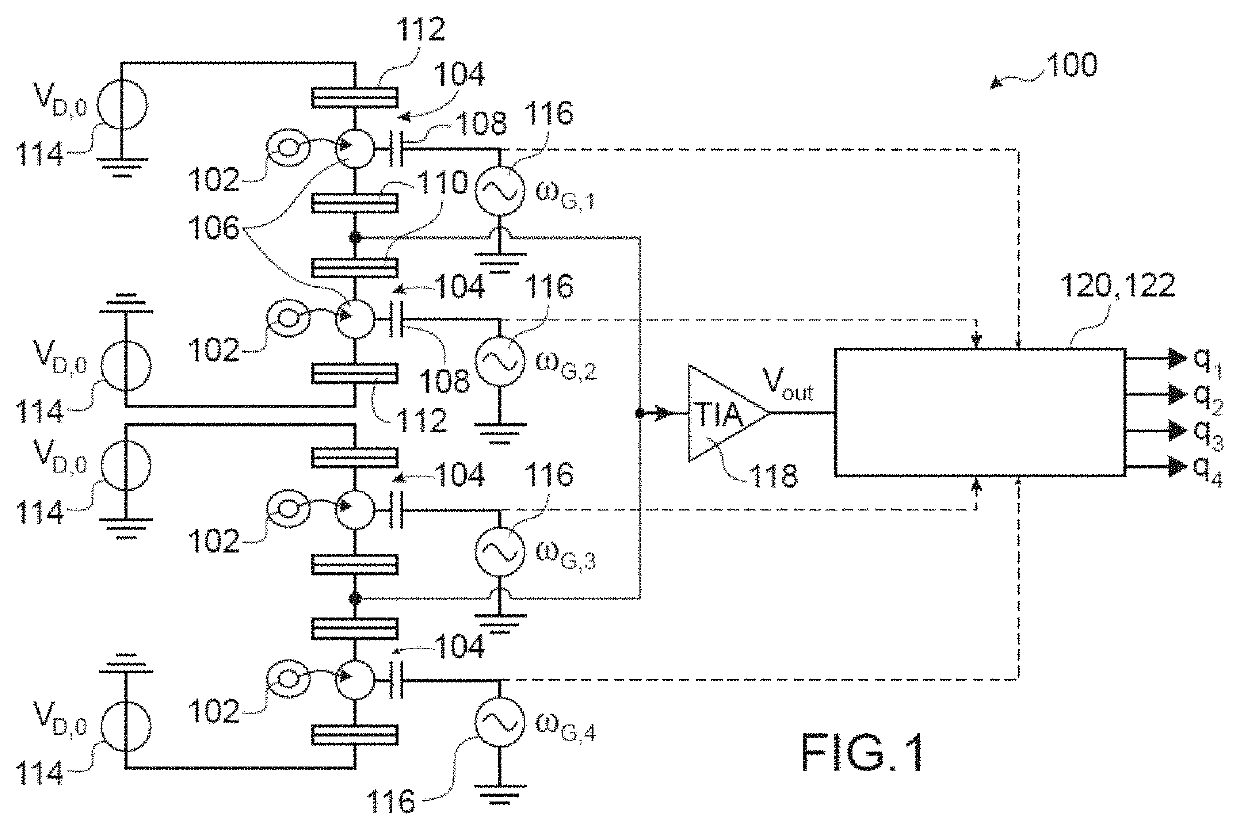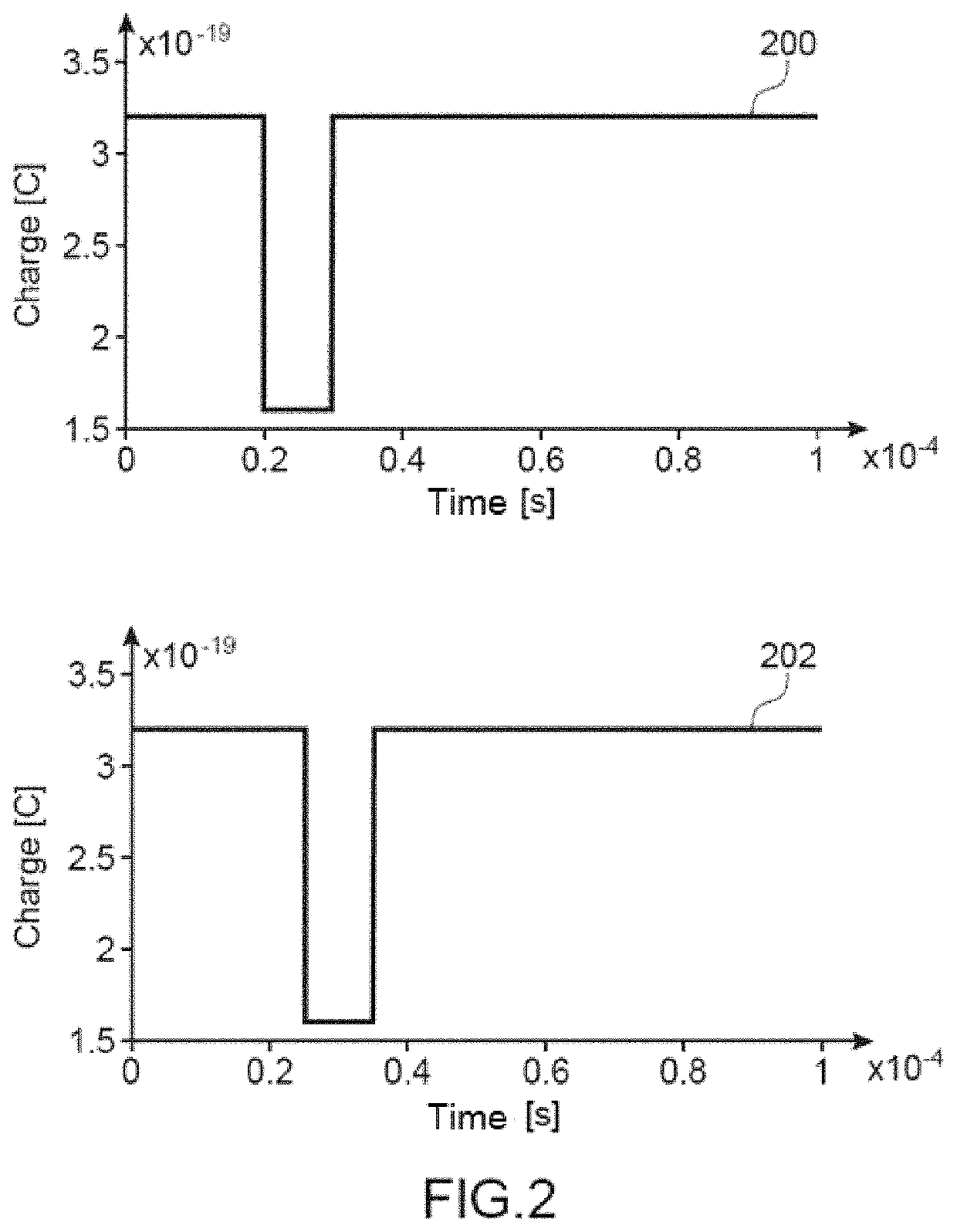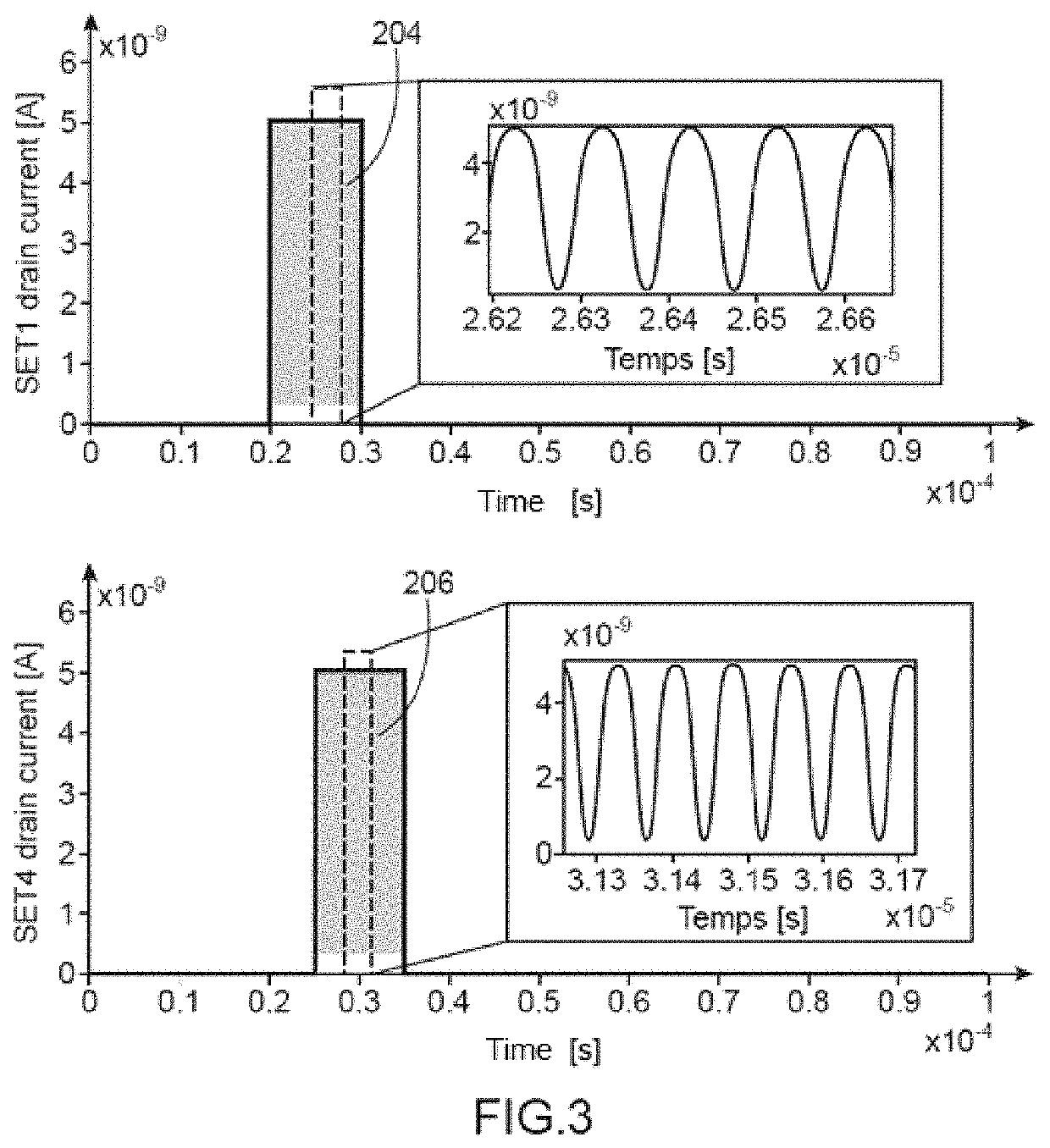Quantum device with multiplexed electrometer output signals
a quantum device and electrometer technology, applied in quantum computers, computing, instruments, etc., can solve the problems of limiting the massive use of inductors inside the cryostat, limiting the use of magnetic cores to promote the integration of inductors, and inter-inductor coupling can raise new problems, etc., to achieve the effect of introducing little quantization noise, low power consumption, and complex building
- Summary
- Abstract
- Description
- Claims
- Application Information
AI Technical Summary
Benefits of technology
Problems solved by technology
Method used
Image
Examples
first embodiment
[0084]One exemplary embodiment of a quantum device 100 is described below in connection with FIG. 1.
[0085]The device 100 includes several spin qubits each comprising at least one quantum dot 102. In the exemplary embodiment shown in FIG. 1, four spin qubits are shown. However, the device 100 may include a different number of qubits, for example between 2 and 10,000 qubits.
[0086]The qubits in device 100 correspond to spin qubits made in a semiconductor layer, for example silicon or germanium. The charges whose spin is to be read out may correspond to electrons or holes.
[0087]The device 100 includes several electrometers 104 each electrostatically coupled to a potential well of the quantum dot 102 of one of the spin qubits. In the exemplary embodiment shown in FIG. 1, four electrometers 104 are shown.
[0088]Further, in the exemplary embodiment of FIG. 1, the electrometers 104 correspond to single electron transistors, or SETs. Each of the electrometers 104 includes a quantum dot 106 e...
second embodiment
[0134]One exemplary embodiment of a quantum device 100 is described below in connection with FIG. 12.
[0135]In this second embodiment, the qubits of the quantum device 100 are arranged as a matrix of M rows and N columns, with M and N being integers greater than or equal to 1 and at least one of the numbers M and N is strictly greater than 1. The electrometers 104 are also arranged by forming a matrix of M rows and N columns. This matrix of electrometers 104 is arranged above or below the matrix of qubits such that the quantum dot 102 of each of the qubits is electrostatically coupled to a quantum dot 106 of one of the electrometers 104 lying in proximity to, above or below, the quantum dot 102 of each of the qubits.
[0136]The matrix of qubits and the matrix of electrometers 104 can be made in a superimposed manner by implementing a 3D integration method.
[0137]The device 100 includes here M circuits 116 for applying at least one excitation signal to at least one input electrode of ea...
PUM
 Login to View More
Login to View More Abstract
Description
Claims
Application Information
 Login to View More
Login to View More - R&D
- Intellectual Property
- Life Sciences
- Materials
- Tech Scout
- Unparalleled Data Quality
- Higher Quality Content
- 60% Fewer Hallucinations
Browse by: Latest US Patents, China's latest patents, Technical Efficacy Thesaurus, Application Domain, Technology Topic, Popular Technical Reports.
© 2025 PatSnap. All rights reserved.Legal|Privacy policy|Modern Slavery Act Transparency Statement|Sitemap|About US| Contact US: help@patsnap.com



